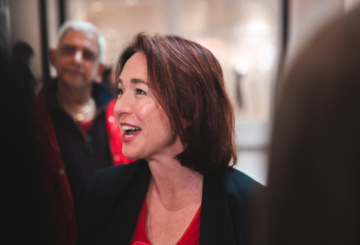오클랜드 시의회는 이달 말까지 장기 계획 (LTP) 에 대한 대중의 의견을 구하고 있습니다.LTP는 향후 10년간 시의회의 목표를 개괄적으로 설명하며, 여기에는 목표 달성 계획 및 자금 지원 방안이 포함됩니다.이 계획은 3년마다 검토되며, 올해 검토를 통해 2024년부터 2034년까지 위원회의 방향이 정해질 것입니다.
웨인 브라운 (Wayne Brown) 시장이 이끄는 시의회는 LTP에서 해결해야 할 몇 가지 주요 문제를 제안했습니다.시의회가 수입을 늘리기 위한 주요 계획 중 하나는 금리 인상입니다.현행 LTP는 증가하는 비용을 충당하기 위해 금리를 인상할 것을 제안하고 있는데, 제안된 최저 인상률은 내년에 5.5% 로, 2026년과 2027년에는 3.5% 로 떨어졌습니다.
또한 브라운은 수도 요금 인상을 제안하지만 정부 지원을 요청하여 비용을 절감할 수 있도록 하는 것을 목표로 하고 있습니다.평균 가계 요금은 3560달러에서 3827달러로, 수도 요금은 1340달러에서 1686달러로 인상되어 총 613달러 인상될 수 있습니다.
또한 의회는 정부가 지역 연료세를 종료하기로 결정함에 따라 오클랜드의 교통 및 도로 시스템 관련 비용을 절감할 계획입니다.즉, 대체 자금 지원 방법을 찾기 전까지는 새로운 도로 프로젝트를 위한 자금이 마련되지 않을 것입니다.
시의회는 또한 부채를 줄이는 것을 목표로 하고 있는데, 이 부채는 코로나바이러스로 인해 2021년에 전체 수익의 290% 로 밀려났습니다.장기 목표는 수익 대비 부채 비율을 270% 까지 낮추는 것입니다.
브라운은 마오리족의 성과에 대해 1억 7,100만 달러를 추가로 배정하고자 한다. 하지만 여기에는 자금이 어떻게 사용되고 있는지를 검토해야 한다는 조건이 따른다.그는 더 나은 성과를 내기 위해 마오리족과 협력하는 것이 중요하다고 강조한다.
마지막으로, 이 계획은 워터케어와 오클랜드 트랜스포트를 제외한 의회가 통제하는 모든 단체에 대한 자금 지원을 향후 3년간 삭감할 것을 제안한다.하지만 시의회의 부동산 포트폴리오를 관리하는 에케 파누쿠 (Eke Panuku) 는 비용을 절감해야 할 것이다.





























































